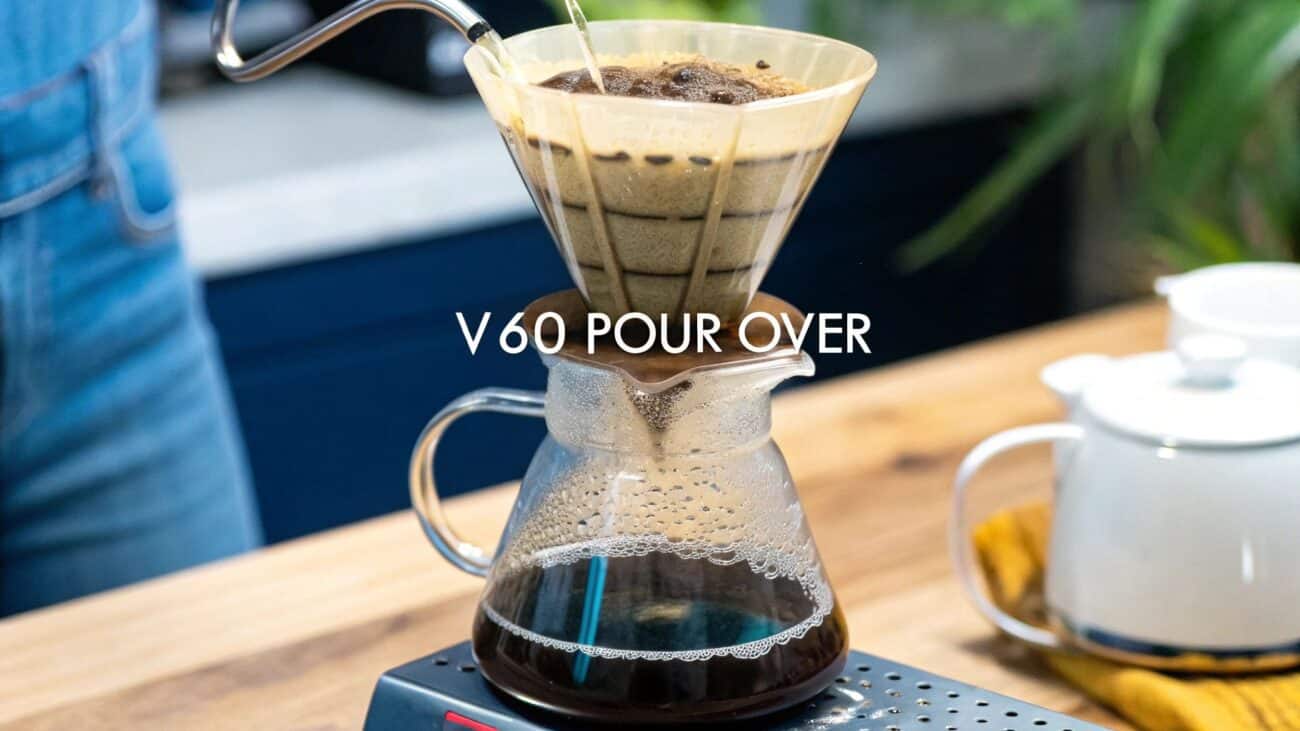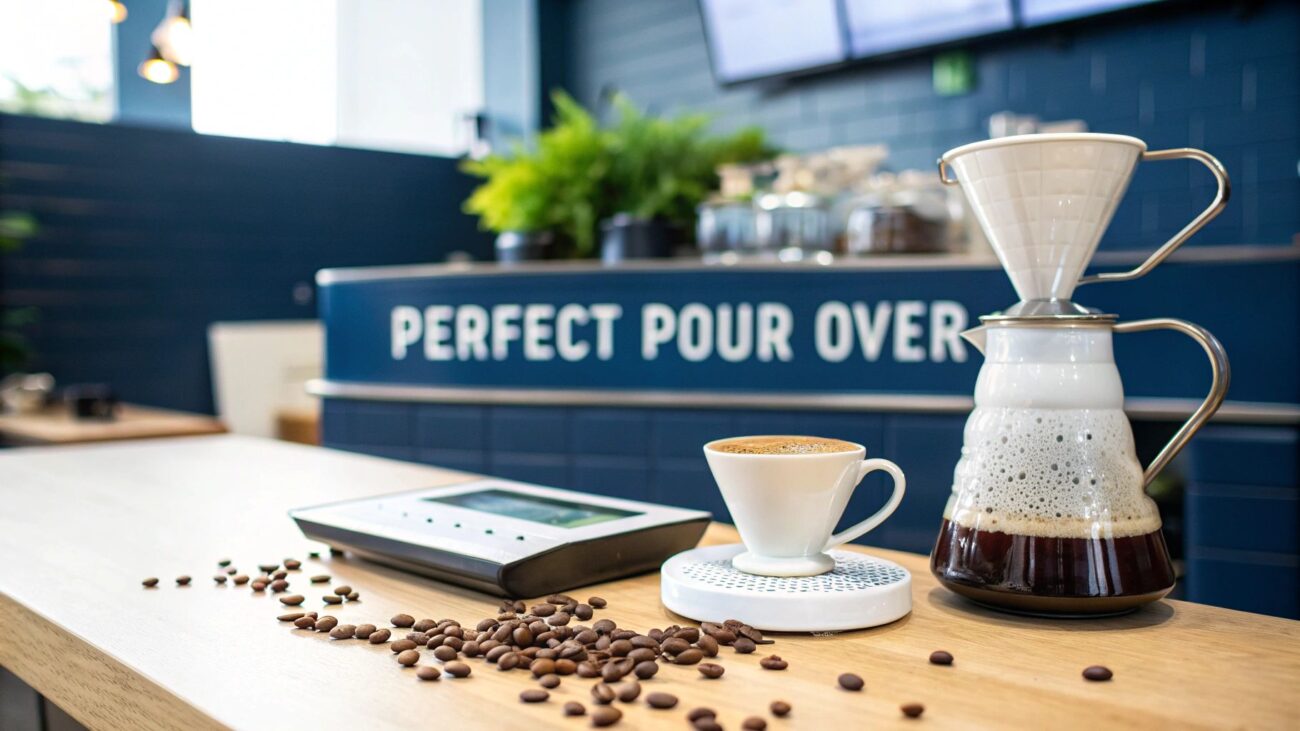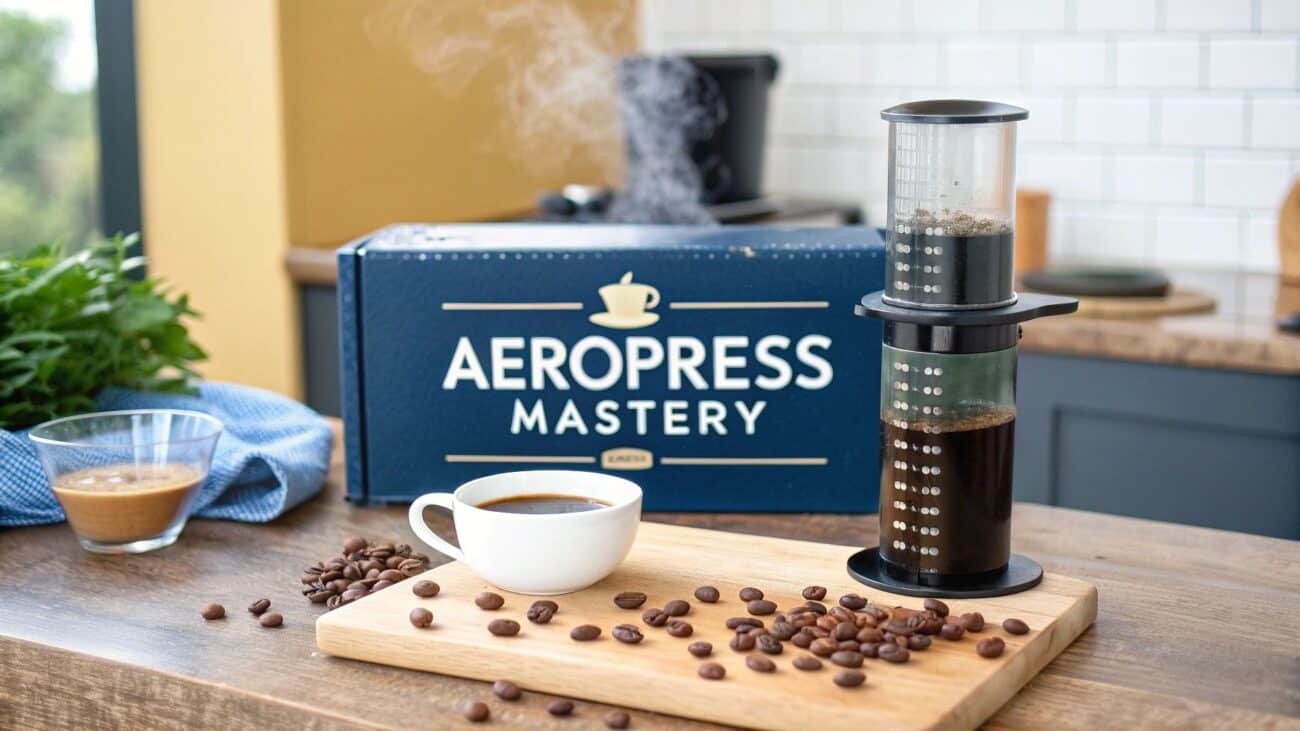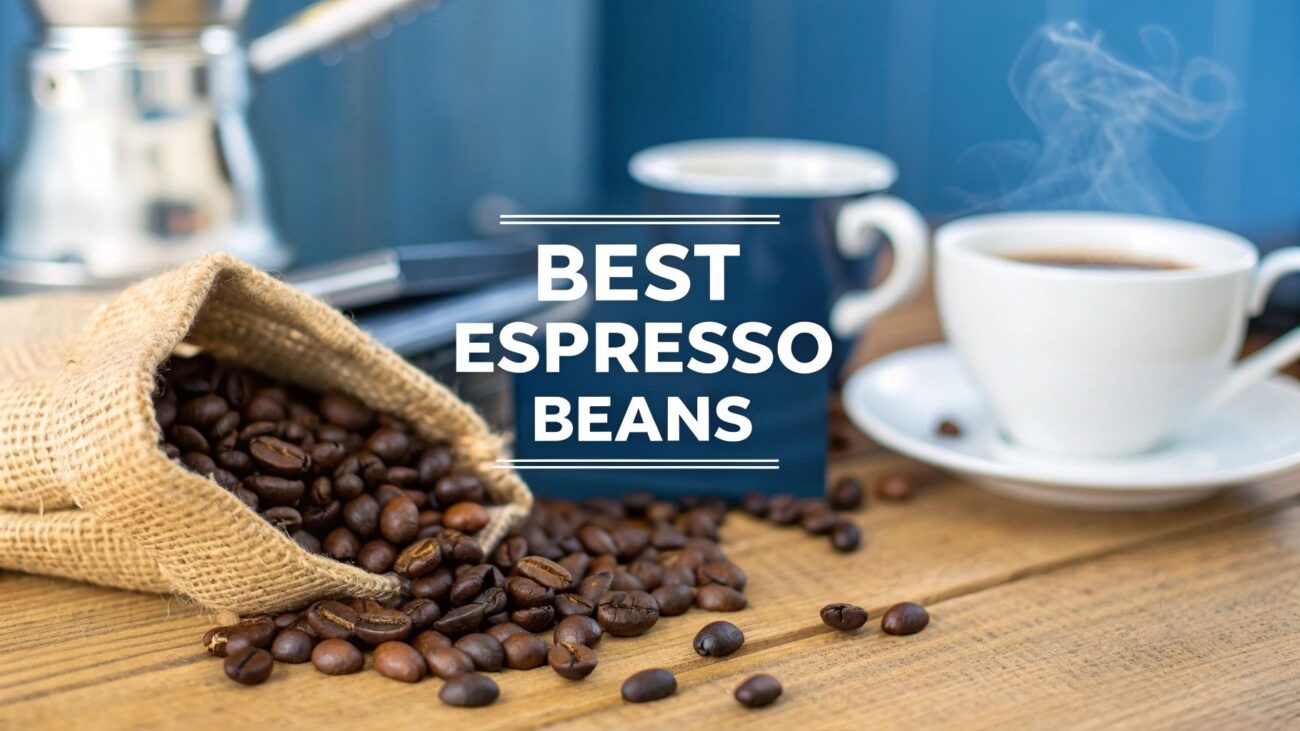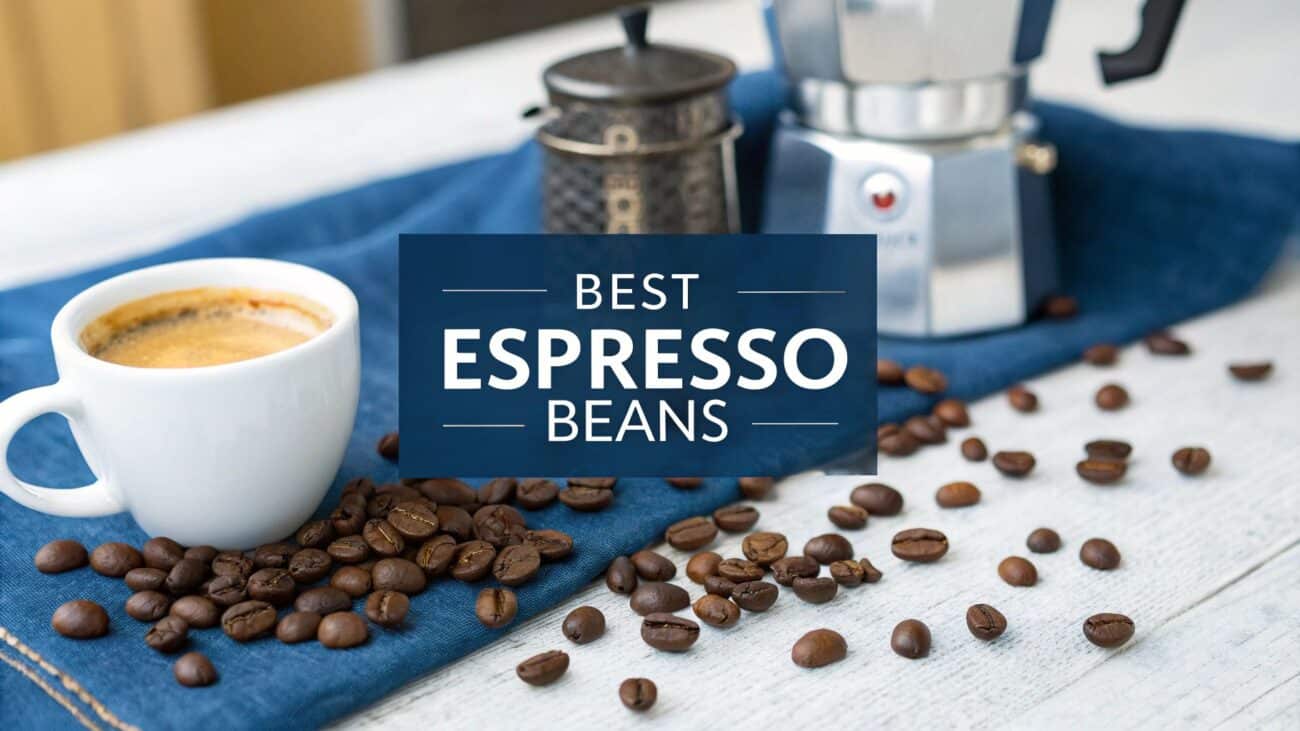Mastering the Cold Brew Coffee Ratio
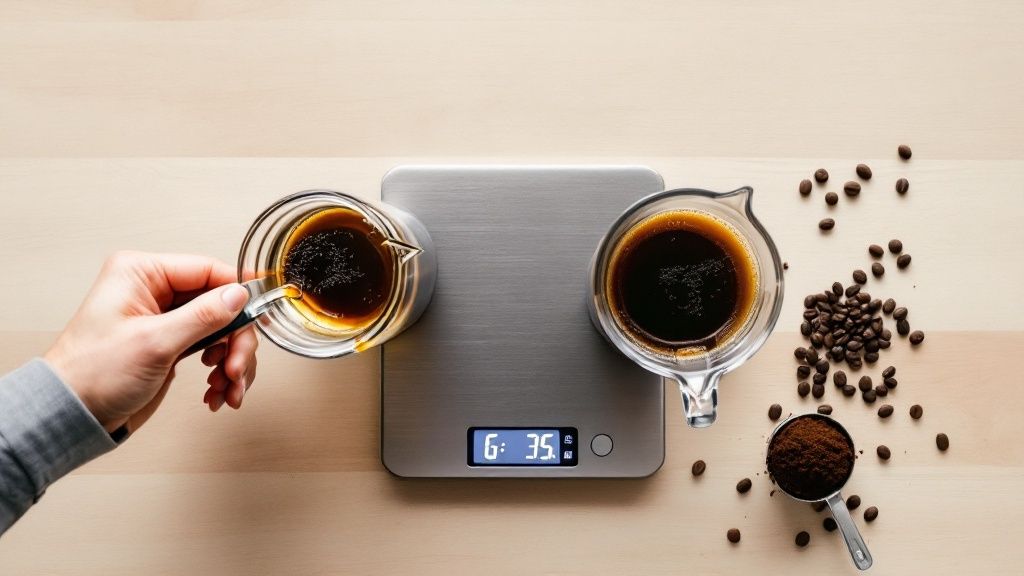
The secret to a brilliant cold brew isn't some fancy gadget or an obscure bean from a distant land. It's much simpler than that. The best starting point is a 1:8 ratio—that's 1 part coffee to 8 parts water. This will give you a rich, versatile concentrate you can dilute to your liking.
If you'd rather make something you can drink straight from the fridge, a milder 1:15 ratio is a fantastic place to start.
Why Your Cold Brew Ratio Is Everything
Welcome to the wonderfully patient world of cold brew. Unlike the quick, fiery passion of hot brewing, making cold brew is a slow dance between time and water. Because we’re not using heat to rapidly extract flavour, the ratio of coffee to water becomes the single most important decision you'll make. It’s the cornerstone of your entire brew.
Nailing this simple measurement is the difference between a sad, watery brown liquid and a truly exceptional cup of coffee. It dictates the strength, the smoothness, and the overall character of what ends up in your glass. Think of it as the blueprint for your brew; even a tiny tweak can completely transform the final result.
Building a Foundation of Flavour
Once you get a handle on the ratio, you're in complete control of the extraction. A balanced ratio allows you to pull all those lovely sweet, chocolatey, and fruity notes from the beans while leaving the bitter, unwanted compounds behind.
- Strength: More coffee (like a 1:5 ratio) creates a powerful concentrate, perfect for mixing with milk, tonic, or more water.
- Smoothness: The right balance is what delivers that signature low acidity and silky-smooth finish that cold brew is famous for.
- Consistency: When you measure properly, you can recreate that perfect batch again and again. No more guesswork!
This focus on quality and repeatability has helped cold brew explode in popularity. Here in the UK, the market is booming, projected to grow at a compound annual rate of 20.6% between 2025 and 2034. It’s clear that our busy lifestyles and growing love for premium coffee have found a perfect match.
Don't think of the ratio as just a strict recipe. See it as your main tool for customisation. Once you understand it, you can tailor every brew to your exact mood—whether that's a bold kick-start to your morning or a light, refreshing sipper for the afternoon.
This slow, methodical extraction is a world away from faster methods. If you're curious about how heat changes the game entirely, our guide on V60 coffee brewing offers a great comparison.
Concentrate or Ready-to-Drink? Two Paths to Cold Brew
Before you even grind your beans, you’ve got a choice to make. This decision will shape your whole brewing process: are you aiming for a potent, versatile concentrate, or do you want a smoother brew that's ready to drink straight away? Each approach has its perks, and the key is knowing the right cold brew coffee ratio for the job.
Making a Concentrate
Think of a concentrate as your secret weapon for quick, delicious coffee all week long. It’s all about brewing a super-strong, flavour-packed base that you can dilute later. This method is a lifesaver if you're short on fridge space but big on flavour.
For a good concentrate, you'll want a much tighter ratio, usually somewhere between 1:4 and 1:8. That simply means for every one part coffee, you'll add between four and eight parts water. A great starting point is using 100g of coffee with 800ml of water, which gives you a classic 1:8 ratio.
Why I love this method:
- Saves serious space: A small jar of this packs a punch and lasts for days.
- Total flexibility: You can mix it with cold water for a classic iced coffee, add your favourite milk for a creamy latte, or even get creative with sparkling water for a coffee spritzer. You decide how strong each glass is.
The real magic of a concentrate is having complete control. You can make one big batch and then customise every single drink. A strong, black coffee for the morning rush and a milder, milky version for the afternoon, all from the same brew.
The Ready-to-Drink Method
If you're after simplicity and a brew you can pour straight over ice, the ready-to-drink approach is for you. This is less about creating a base and more about crafting the finished article from the get-go.
Here, you'll use a more generous amount of water, with ratios typically falling between 1:12 and 1:16. This creates a brew that’s smooth, balanced, and perfectly drinkable as is—no dilution needed. Just pour and enjoy.
This method aligns with a big trend here in the UK, where classic, authentic coffee flavours are king, holding over 52% of the market. It’s no surprise the ready-to-drink scene is booming; it’s the perfect blend of quality and convenience. If you’re curious, you can find more details on UK coffee market trends and growth.
How to Measure Your Ingredients Accurately
If you want to nail that perfect cold brew ratio time and time again, precision is everything. It might be tempting to just scoop your beans, but this is one of the most common mistakes I see. Coffee beans vary so much in size and density that measuring by volume is a recipe for inconsistent results.
The secret to repeatable, delicious cold brew is simple: measure by weight.
A basic digital kitchen scale is the single best tool for taking the guesswork out of your brewing. It guarantees that 100g of coffee is always exactly 100g, no matter if you're using a light, fluffy Ethiopian bean or a dense Sumatran one. This gives you a reliable starting point for every batch.
Why Weight Beats Volume Every Time
In the world of coffee, measuring by weight is the gold standard for a reason. It’s all about consistency. Here’s how I do it every time:
- Zero the scale: Pop your brewing jar or container on the scale and hit the 'tare' or 'zero' button to reset it.
- Weigh your beans: Add your whole coffee beans directly into the jar until the scale shows your target weight.
- Grind the coffee: Now, grind those beans to a coarse consistency—think coarse sea salt or breadcrumbs.
- Add your water: Put the jar with the grounds back on the scale, zero it out one more time, and pour in your water. Since 1ml of water weighs 1g, you just pour until you hit the right number in grams.
Getting into this habit is probably the most significant improvement you can make to your entire brewing process. For a deeper dive into other core techniques, our general guide on how to brew coffee is a great place to start.
What if you don't have a scale? You can get by with volume in a pinch. As a rough guide, a level tablespoon of whole beans typically weighs between 5 and 7 grams. It’s not a perfect substitute, but it’ll get you in the right ballpark.
Mastering the Steeping and Brewing Process
You’ve got your coffee and water measured out, so now for the magic. This is where patience really pays off, as we let time do the work to create that signature smooth cold brew flavour. The whole process is refreshingly simple, but the secret lies in how you combine everything and how long you let it sit.
The main goal here is to make sure every single coffee ground gets completely soaked right from the get-go.
You don’t need any high-tech gear. A French press works brilliantly, but so does a big Mason jar or any clean container with a lid. Simply add your coarse coffee grounds and filtered water, give it a good stir to get rid of any dry clumps, pop the lid on, and you're set.
How Your Ratio Affects Steeping Time
The ratio you’ve chosen has a direct impact on how long you should let your coffee brew. Think of it this way: a stronger, more concentrated mix needs a bit more time to fully extract all those deep, chocolatey notes without turning bitter. On the flip side, a weaker, ready-to-drink brew gets to that sweet spot much faster.
This image breaks down the essential steps for making a classic cold brew concentrate.
As you can see, a 1:8 ratio steeped for around 16 hours is a solid, versatile starting point that I often recommend.
Here are a few guidelines I’ve found work well over the years:
- Strong Concentrates (1:4 to 1:8): Let these steep for 18 to 24 hours. You need that extra time to pull all the complex flavours out of the densely packed grounds.
- Ready-to-Drink Brews (1:12 to 1:16): These typically only need 12 to 16 hours. Any longer and you start to venture into over-extraction territory, which is what brings out those unwanted bitter flavours.
My best piece of advice? Steep your coffee somewhere with a stable temperature, either on the counter or in the fridge. I personally prefer the fridge because it’s a more controlled environment, giving you a reliably clean and consistent extraction every time.
Once the wait is over, it’s time to filter. That silky-smooth texture is what makes cold brew so special, and that means getting rid of all the fine coffee sediment. You can strain your brew through a fine-mesh sieve, a paper coffee filter, or even a few layers of cheesecloth. I always double-strain mine for an impeccably clean, grit-free cup.
While cold brew is in a league of its own, getting to grips with other techniques can seriously up your coffee game. You can explore some of the best coffee brewing methods to see how they all stack up.
How to Adjust and Perfect Your Flavour Profile
Think of your first attempt at a new cold brew coffee ratio as your baseline, not the final product. The real magic happens when you take that first sip and start fine-tuning the recipe. This is where you graduate from simply following instructions to crafting a brew that's perfectly suited to your taste.
Every batch offers clues. Is your brew a bit underwhelming and thin? Or is it so potent it's almost syrupy and bitter? Each flavour note tells you something about your ratio, your grind, or how long you let it steep. Learning to interpret these signals is the secret to mastering cold brew at home.
Getting the Flavour Just Right
Most of the time, fixing a flavour issue is a matter of making a small adjustment to one of your key variables. Resist the urge to change everything at once. Instead, tweak one thing at a time—the ratio, the grind, or the time—so you can see exactly how it affects the final taste.
A methodical approach saves a lot of guesswork and helps you quickly dial in the perfect brew for your palate.
Troubleshooting Your Cold Brew Flavour
It can be frustrating when your cold brew doesn't turn out quite right. But don't worry, most common issues are easy to diagnose and fix with a few simple tweaks.
This table breaks down the most frequent problems you might encounter and gives you clear, actionable steps to get your brew back on track.
| Problem | Possible Cause | How to Fix It |
|---|---|---|
| Weak & Watery | Under-extraction. Not enough flavour was pulled from the grounds. | Try a stronger ratio (e.g., 1:7 instead of 1:8) or steep for 2-4 hours longer. |
| Bitter or Harsh | Over-extraction. Too much has been pulled from the coffee. | Use a coarser grind setting on your next batch, or shorten the steep time by a couple of hours. |
| Sour or Too Acidic | Under-extraction, often from a steep time that was too short. | Let it steep for a few more hours. You could also try a slightly finer grind, but be careful not to go too fine. |
| Muddy or Silty | The coffee grind was too fine, allowing sediment to pass through the filter. | Always use a coarse grind. A finer grind also increases the risk of over-extraction and bitterness. |
Remember, this is a guide to get you started. The best way to learn is by tasting your coffee at different stages and taking notes on what you like.
Don't forget the beans themselves play a massive role! A light roast will naturally have more bright, acidic notes, whereas a dark roast delivers those classic deep, chocolatey flavours. Switching up your roast profile can completely transform your cold brew, even if you keep the ratio exactly the same.
Getting to grips with how different roasts influence taste is a real game-changer. You can dig deeper into how various coffee roasting profiles explained will help you perfect your brew. The real fun is in the experimentation, so don't be afraid to play around with different beans and ratios until you find what you love.
Your Cold Brew Questions, Answered
Once you get the hang of the basics, a few common questions always seem to pop up as you start fine-tuning your technique. Let's tackle some of the things home brewers often ask.
Getting these little details right is what separates a decent cup from a truly great one. It’s all about building your confidence and making every batch a winner.
What Kind of Beans Work Best?
I find that medium to dark roasts are fantastic for cold brew. They naturally lean into those rich, chocolatey, and nutty flavour profiles that this slow brewing method brings out so beautifully, leaving you with a smooth and inherently sweet coffee.
Lighter roasts can be a bit trickier. Their more delicate, acidic, and floral notes sometimes get lost in the long, slow steep. If you’re set on using a light roast, you might want to play with a slightly stronger ratio or let it brew for a bit longer to really pull out its character.
Can I Reuse My Coffee Grounds for a Second Batch?
You can, but honestly, I wouldn't recommend it. The first brew has already pulled out all the good stuff – the oils, the caffeine, and the complex flavours.
A second steep just results in a weak, watery, and disappointing brew that lacks all the depth and character you’re looking for. For the best possible taste, always start with fresh grounds.
How Should I Store My Cold Brew?
Once your brew is filtered and ready, pop it into an airtight container and straight into the fridge. A glass jar or bottle with a secure lid is perfect for keeping it fresh.
Stored this way, your cold brew concentrate will easily last for up to two weeks. That said, it’s always at its most delicious in that first week, so try to enjoy it while the flavour is at its absolute peak.
Ready to start experimenting and find your perfect cold brew ratio? It all begins with quality beans. Seven Sisters Coffee Co has a brilliant selection of single-origin and blended coffees, all expertly roasted to bring out the best flavours for your home brewing adventures. Find your new favourite at https://sevensisterscoffee.co.uk.








